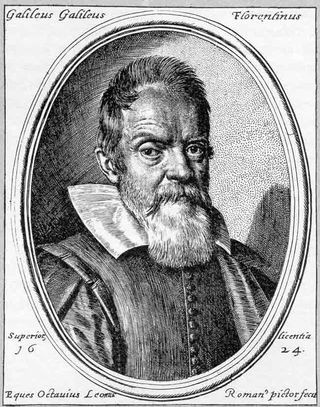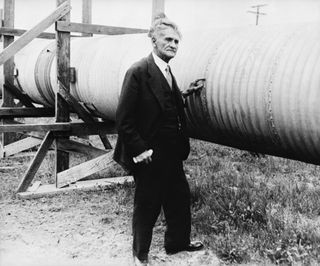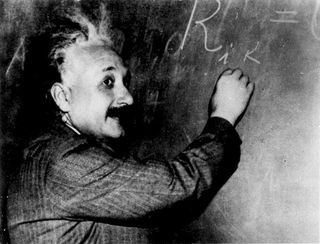Are you curious about How Many Miles Does Light Travel In A Second? The answer is fascinating, and understanding it opens up a whole new perspective on the universe. At SIXT.VN, we’re passionate about connecting you with the wonders of Vietnam and the universe. Let’s dive into this mind-blowing concept and explore the implications for space, travel, and our understanding of the cosmos, offering you a smooth journey through knowledge. Explore travel tips, cultural insights, and convenient services for an unforgettable Vietnam trip.
1. Understanding the Speed of Light: A Cosmic Constant
The speed of light in a vacuum is approximately 186,282 miles per second (299,792,458 meters per second). This is a fundamental constant in physics, often denoted as “c.” According to Albert Einstein’s theory of special relativity, nothing in the universe can travel faster than light. As an object approaches the speed of light, its mass increases infinitely, making it impossible to reach or exceed this speed. This speed is so constant that the U.S. National Institute of Standards and Technology uses it to define international standard measurements like the meter, foot, and inch. It also plays a crucial role in defining the kilogram and the temperature unit Kelvin.
2. What is a Light-Year and Why Does It Matter?
A light-year is the distance light travels in one year, equivalent to about 6 trillion miles (10 trillion kilometers). Astronomers and physicists use light-years to measure immense distances across the universe. Light from the moon reaches our eyes in about 1 second, making the moon about 1 light-second away. Sunlight takes approximately 8 minutes to reach us, placing the sun about 8 light-minutes away. The nearest star system, Alpha Centauri, is approximately 4.3 light-years away, meaning its light takes 4.3 years to reach us.
 Abstract, futuristic image of blue light streaks radiating outward, giving the impression of rapid movement or traveling at high speed, inspired by the concept of faster-than-light travel
Abstract, futuristic image of blue light streaks radiating outward, giving the impression of rapid movement or traveling at high speed, inspired by the concept of faster-than-light travel
2.1. Visualizing a Light-Year
NASA’s Glenn Research Center explains that one light-year can be visualized by taking the circumference of the Earth (24,900 miles), laying it out in a straight line, multiplying the length of the line by 7.5 (one light-second), and then placing 31.6 million similar lines end to end. This enormous distance equals nearly 6 trillion miles.
2.2. Implications of Light-Years
Because of the vast distances, when we observe objects far away, we see them as they were when the light left them. For example, objects 10 billion light-years away appear as they did 10 billion years ago, relatively soon after the Big Bang. This concept allows astronomers to study the universe’s history and its evolution over billions of years.
3. How Long Would it Take to Travel One Light-Year?
Traveling one light-year is an unimaginable journey with current technology. An airplane traveling at 600 mph (965 km/h) would take 1 million years to cover a single light-year. According to BBC Sky at Night Magazine, even if we could travel one light-year using a crewed spacecraft like the Apollo lunar module, the journey would take approximately 27,000 years. The vast distances to stars and other objects beyond our solar system, ranging from a few light-years to billions of light-years, emphasize the challenges of interstellar travel and the importance of understanding the speed of light.
4. Expert Insights on the Speed of Light: Q&A with Dr. Rob Zellem
To provide deeper insights into the speed of light, we consulted Dr. Rob Zellem, an exoplanet-hunter and staff scientist at NASA’s Jet Propulsion Lab. Here are some frequently asked questions:
4.1. What is Faster Than the Speed of Light?
Nothing. Light is the universe’s ultimate speed limit, according to Einstein’s theory of relativity. Its speed in a vacuum is about 300,000 kilometers per second (186,000 miles per second).
4.2. Is the Speed of Light Constant?
The speed of light is constant in a vacuum. However, it can slow down when passing through a medium like water (225,000 kilometers per second or 140,000 miles per second) or glass (200,000 kilometers per second or 124,000 miles per second).
4.3. Who Discovered the Speed of Light?
Ole Rømer made one of the first measurements of the speed of light in 1676 by observing the moons of Jupiter. In 1879, the Michelson-Morley Experiment provided the first high-precision measurement.
4.4. How Do We Know the Speed of Light?
Ole Rømer measured the speed of light by observing eclipses of Jupiter’s moon Io. He noted that eclipses occurred slightly earlier when Jupiter was closer to Earth, attributing the difference to the time it took light to travel the longer distance.
5. The Historical Quest to Measure Light’s Speed
 Galileo Galilei is credited with discovering the first four moons of Jupiter.
Galileo Galilei is credited with discovering the first four moons of Jupiter.
Measuring the speed of light has been a subject of contemplation for centuries. Here is a timeline:
- 5th Century BC: Greek philosophers like Empedocles and Aristotle debated light’s speed. Empedocles proposed that light must travel and have a rate of travel, while Aristotle argued that light must be instantaneous.
- Mid-1600s: Galileo Galilei attempted to measure light speed by having two people on hills flash lanterns, but the distance was insufficient to record the speed.
- 1670s: Danish astronomer Ole Rømer, while creating a timetable for sailors, observed the eclipses of Jupiter’s moon Io and noticed variations in timing. He concluded that light took measurable time to travel from Io to Earth, estimating light’s speed at about 124,000 miles per second (200,000 km/s).
- 1728: English physicist James Bradley based calculations on the change in the apparent position of stars caused by Earth’s orbit, estimating light’s speed at 185,000 miles per second (301,000 km/s), within 1% of the real value.
- Mid-1800s: French physicists Hippolyte Fizeau and Leon Foucault used Earth-based experiments to refine the measurement. Fizeau used a rotating toothed wheel and mirror setup, while Foucault used a rotating mirror. Both methods came within about 1,000 miles per second (1,609 km/s) of the speed of light.
- Late 1800s: Albert A. Michelson improved upon Foucault’s method, increasing the distance between mirrors and using high-quality optics. In 1879, Michelson’s result of 186,355 miles per second (299,910 km/s) was considered the most accurate measurement for 40 years.
6. Albert Michelson and the Nature of Light
 Dr. Albert A. Michelson stands next to a large tube supported by wooden beams.
Dr. Albert A. Michelson stands next to a large tube supported by wooden beams.
Albert A. Michelson’s studies extended to the nature of light itself. He and his colleague Edward Morley worked under the assumption that light moved as a wave through a medium called the “luminiferous aether.” However, their experiments failed to find evidence of the aether, leading to the conclusion that light can travel through a vacuum. This groundbreaking work earned Michelson a Nobel Prize, marking a revolutionary shift in understanding light.
7. Einstein’s Special Relativity and the Speed of Light
 Albert Einstein writing on a blackboard.
Albert Einstein writing on a blackboard.
Einstein’s theory of special relativity unified energy, matter, and the speed of light in the famous equation E = mc². This equation shows the relationship between mass and energy, where small amounts of mass contain enormous amounts of energy. The speed of light serves as a conversion factor, explaining how much energy is within matter.
Einstein asserted that light moved through a vacuum at a constant speed, regardless of the observer’s motion. This concept revolutionized physics and set the speed of light as an immutable speed limit of the universe.
8. What Expands Faster Than the Speed of Light?
While the speed of light is the speed limit within the universe, the universe itself expands faster. The universe expands at a rate of a little more than 42 miles (68 kilometers) per second for each megaparsec of distance from the observer. At some point, at an obscene distance, this expansion exceeds the speed of light. Special relativity provides an absolute speed limit within the universe, but general relativity allows different behavior when examining physics on a large scale.
9. When Does Light Slow Down?
 A sparkling diamond amongst dark coal-like rock.
A sparkling diamond amongst dark coal-like rock.
Although light travels at an absolute speed in a vacuum, it can be slowed down when traveling through any material. The refractive index measures the extent to which a material slows down light. Light bends when contacting particles, resulting in a decrease in speed.
For example, light moving through Earth’s atmosphere slows down by just three ten-thousandths of the speed of light. Light passing through a diamond slows to less than half its typical speed. Researchers have also trapped and stopped light inside ultra-cold clouds of atoms and even slowed down a single photon moving through a vacuum.
10. Faster-Than-Light Travel: Science Fiction or Future Reality?
Science fiction often explores faster-than-light travel, making interstellar voyages more accessible. However, achieving this requires harnessing exotic physics. One proposed idea involves a spaceship that could fold a space-time bubble around itself. This concept remains theoretical, but it captures the imagination and drives exploration in theoretical physics.
Without faster-than-light travel, humanity’s reach to the farthest corners of the universe would be limited. Future physicists may find ways to surpass the speed of light and make interstellar travel a reality.
11. Exploring Vietnam with SIXT.VN: Your Gateway to Adventure
As you ponder the vastness of space and the speed of light, why not explore the wonders of Vietnam with SIXT.VN? We offer a range of services to make your travel experience seamless and unforgettable.
11.1. Tailored Travel Itineraries
SIXT.VN provides personalized travel itineraries to suit your interests and schedule. Whether you’re interested in cultural landmarks, scenic landscapes, or culinary delights, we’ll design the perfect itinerary for you.
11.2. Airport Transfers
Enjoy hassle-free airport transfers with our reliable and comfortable service. Our drivers will greet you upon arrival and ensure a smooth journey to your destination.
11.3. Hotel Booking Assistance
Find the perfect accommodation with our hotel booking assistance. We offer a variety of options to suit your budget and preferences, from luxury hotels to cozy guesthouses.
11.4. Guided Tours
Explore Vietnam’s iconic landmarks and hidden gems with our expert-guided tours. Our knowledgeable guides will provide insights into the history, culture, and traditions of each destination.
11.5. Flight Booking Services
Book your flights with ease through SIXT.VN. We offer competitive prices and flexible options to fit your travel plans.
12. Addressing Your Travel Challenges with SIXT.VN
Traveling to a new country can present challenges, but SIXT.VN is here to help you overcome them.
- Detailed Trip Planning: We assist in planning every detail of your trip, ensuring a smooth and enjoyable experience.
- Language and Cultural Support: Our team helps bridge language and cultural gaps, making you feel more comfortable and connected.
- Reliable and Quality Services: We provide trustworthy and high-quality travel services, ensuring peace of mind throughout your journey.
- Convenient Transportation: Navigate Vietnam easily with our transportation services, including airport transfers and local transportation.
- Accommodation Assistance: Find the perfect place to stay with our wide range of hotel options.
13. Discovering Hanoi with SIXT.VN: A Cultural Odyssey
Hanoi, the capital of Vietnam, is a city rich in history, culture, and charm. With SIXT.VN, you can explore the best of Hanoi effortlessly.
13.1. Iconic Landmarks
Visit iconic landmarks such as Hoan Kiem Lake, the Old Quarter, and the Temple of Literature. Our tours provide in-depth insights into the history and significance of these sites.
13.2. Cultural Experiences
Immerse yourself in Hanoi’s vibrant culture with traditional water puppet shows, cyclo rides, and visits to local markets.
13.3. Culinary Delights
Savor the flavors of Hanoi with our culinary tours. Sample local specialties such as pho, banh mi, and egg coffee.
13.4. Day Trips
Take day trips to nearby attractions such as Ha Long Bay and Ninh Binh. We organize seamless excursions with transportation and guided tours.
14. Why Choose SIXT.VN for Your Vietnam Adventure?
SIXT.VN offers numerous advantages for travelers to Vietnam.
- Convenience: We provide a one-stop solution for all your travel needs.
- Reliability: Our services are trustworthy and dependable.
- Support: Our team offers dedicated support throughout your trip.
- Speed: We offer fast and efficient booking and service delivery.
- Tailored Experiences: We customize your travel plans to match your preferences.
15. Optimizing Your Vietnam Trip with SIXT.VN: Practical Tips
To make the most of your Vietnam trip, consider these practical tips from SIXT.VN.
- Plan Ahead: Book your flights, accommodations, and tours in advance to secure the best deals.
- Pack Appropriately: Pack light, comfortable clothing, and essential travel items.
- Stay Connected: Purchase a local SIM card or portable Wi-Fi device to stay connected.
- Learn Basic Phrases: Learning a few basic Vietnamese phrases can enhance your interactions with locals.
- Be Aware of Local Customs: Respect local customs and traditions to ensure a positive travel experience.
16. What is Next? Embark on Your Vietnamese Odyssey Today
Ready to embark on your adventure? Contact SIXT.VN now and let us help you create the perfect Vietnam itinerary.
- Visit SIXT.VN: Explore our range of services and start planning your trip.
- Contact Us: Reach out to our team for personalized assistance and recommendations.
- Address: 260 Cau Giay, Hanoi, Vietnam.
- Hotline/WhatsApp: +84 986 244 358.
17. FAQs About the Speed of Light
17.1. Why is the speed of light important?
The speed of light is fundamental to physics and our understanding of the universe. It impacts how we measure distances, perceive time, and understand the relationship between energy and matter.
17.2. Can humans travel at the speed of light?
According to current physics, humans cannot travel at the speed of light because it would require an infinite amount of energy due to the increase in mass as an object approaches light speed.
17.3. How does the speed of light affect astronomy?
The speed of light affects astronomy because when we observe distant objects, we are seeing them as they were when the light left them, providing a window into the universe’s past.
17.4. What role did Michelson-Morley play in understanding the speed of light?
Michelson and Morley’s experiment demonstrated that light can travel through a vacuum, disproving the existence of the luminiferous aether and influencing Einstein’s theory of special relativity.
17.5. What is the relationship between the speed of light and E=mc²?
In the equation E=mc², the speed of light (c) is a conversion factor that relates mass (m) and energy (E). It shows that small amounts of mass contain vast amounts of energy.
17.6. Does the speed of light vary in different mediums?
Yes, the speed of light is constant in a vacuum, but it slows down when traveling through mediums like water or glass.
17.7. How is the speed of light used in modern technology?
The speed of light is used in technologies such as GPS, fiber optic communication, and laser technology, where precise timing and distance measurements are critical.
17.8. How has our understanding of the speed of light changed over time?
Our understanding of the speed of light has evolved from ancient philosophical debates to precise measurements and its integration into fundamental theories of physics like special relativity.
17.9. What are the potential implications of exceeding the speed of light?
Exceeding the speed of light could revolutionize space travel and communication, but it would also require significant breakthroughs in physics and technology that challenge our current understanding.
17.10. How can I learn more about the speed of light?
You can learn more about the speed of light through books, documentaries, science museums, and reputable online resources such as NASA and academic journals.
18. Conclusion: The Intertwined Worlds of Cosmic Exploration and Travel Adventures
Understanding the speed of light not only broadens our cosmic perspective but also enhances our appreciation for the wonders of the universe. As you explore these concepts, consider embarking on a real-world adventure with SIXT.VN. Discover the beauty, culture, and excitement of Vietnam, with our support every step of the way. The cosmos and our planet are full of awe-inspiring discoveries – start your journey today. Contact SIXT.VN and let the adventure begin.
This expanded article provides a comprehensive overview of the speed of light, its history, and implications, while also integrating SIXT.VN’s travel services and promoting travel to Vietnam. It aims to capture the attention of readers interested in both scientific concepts and travel adventures.



